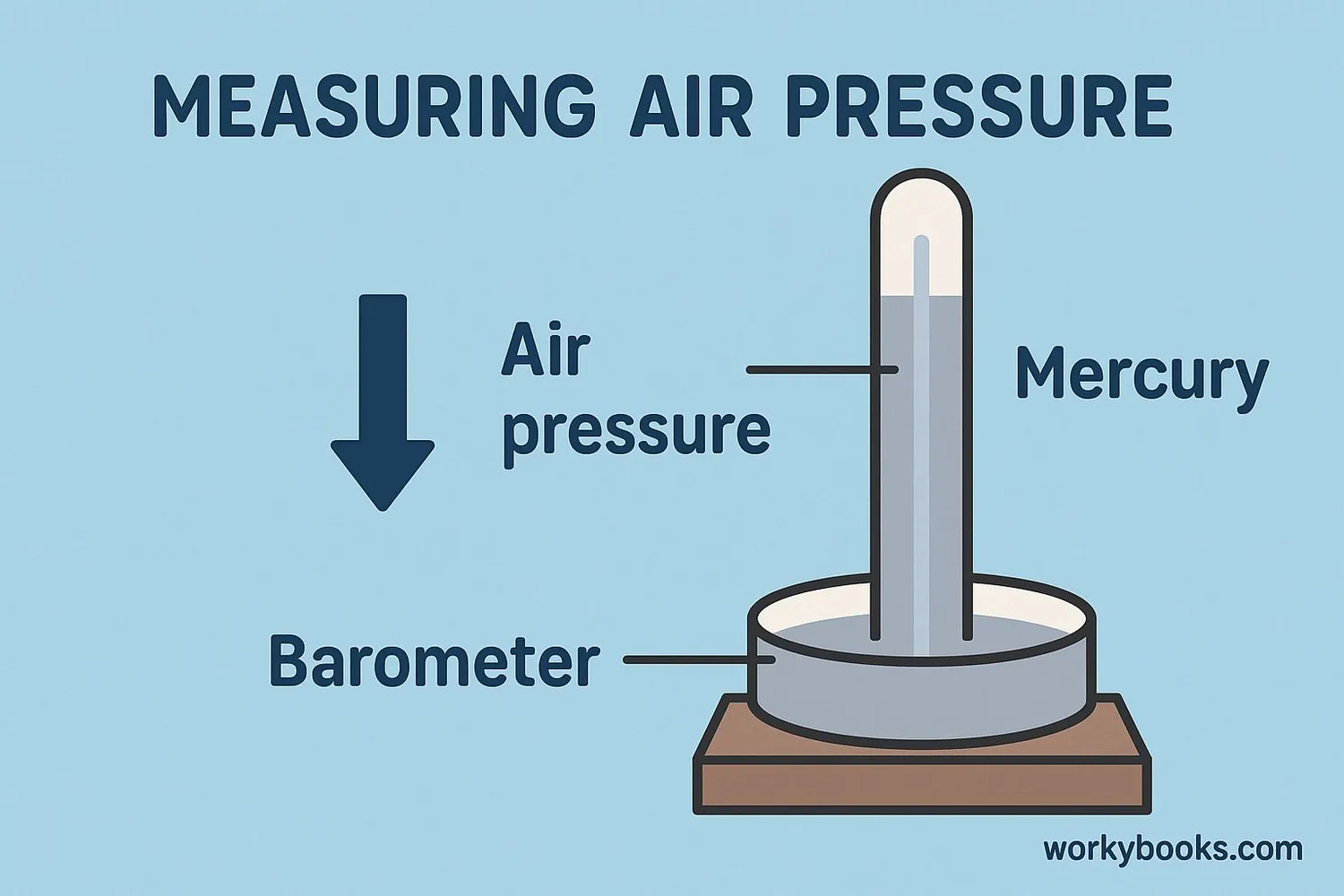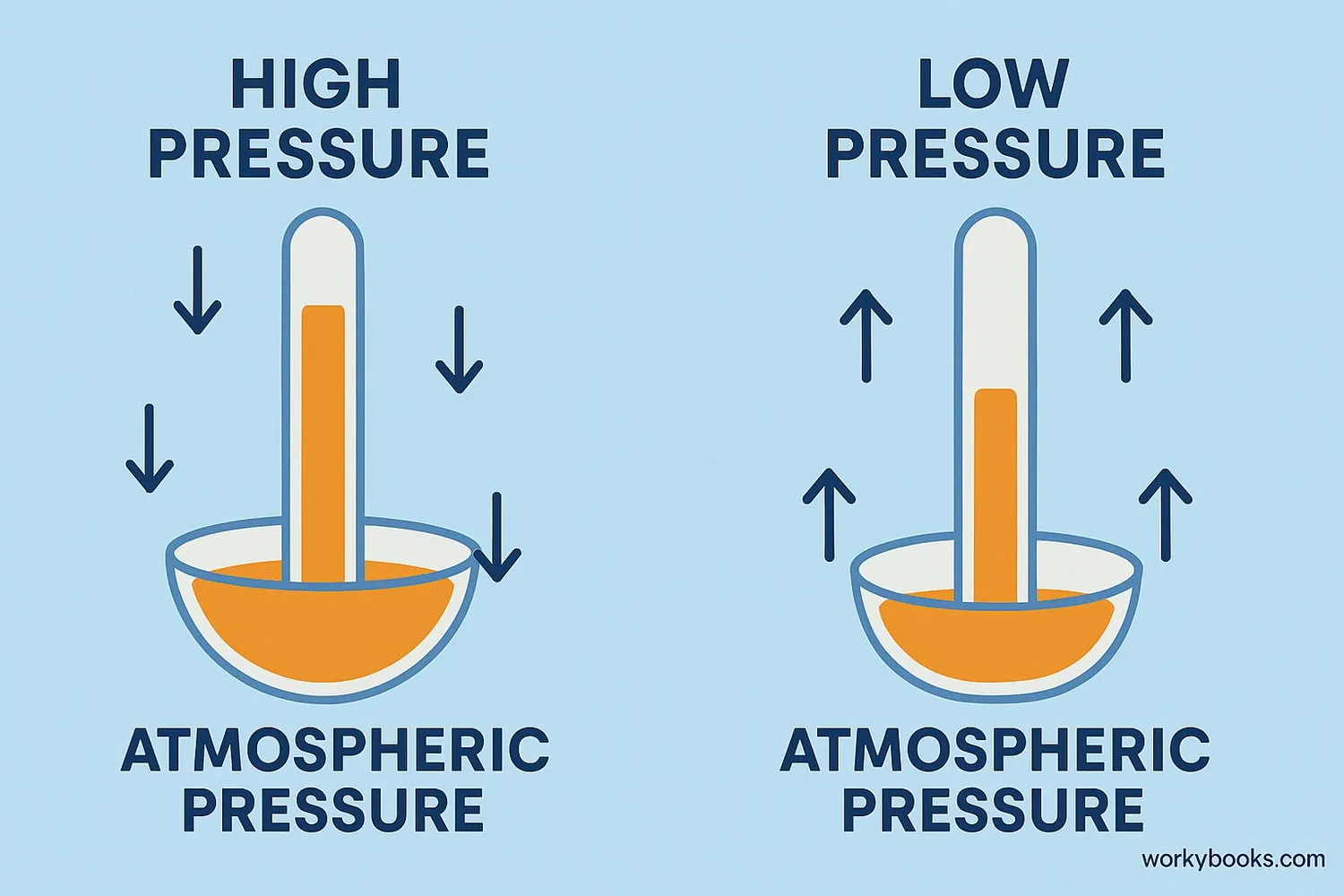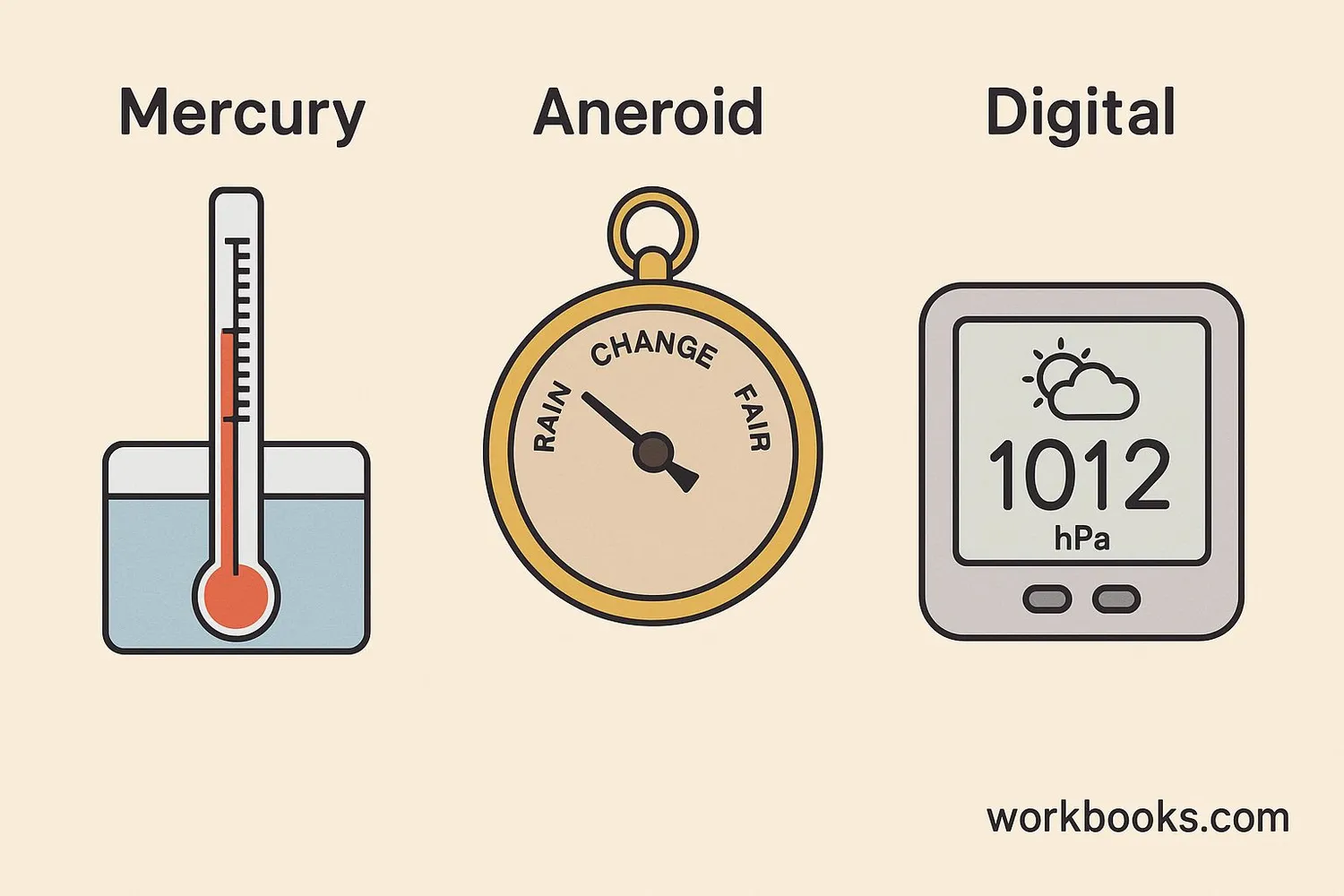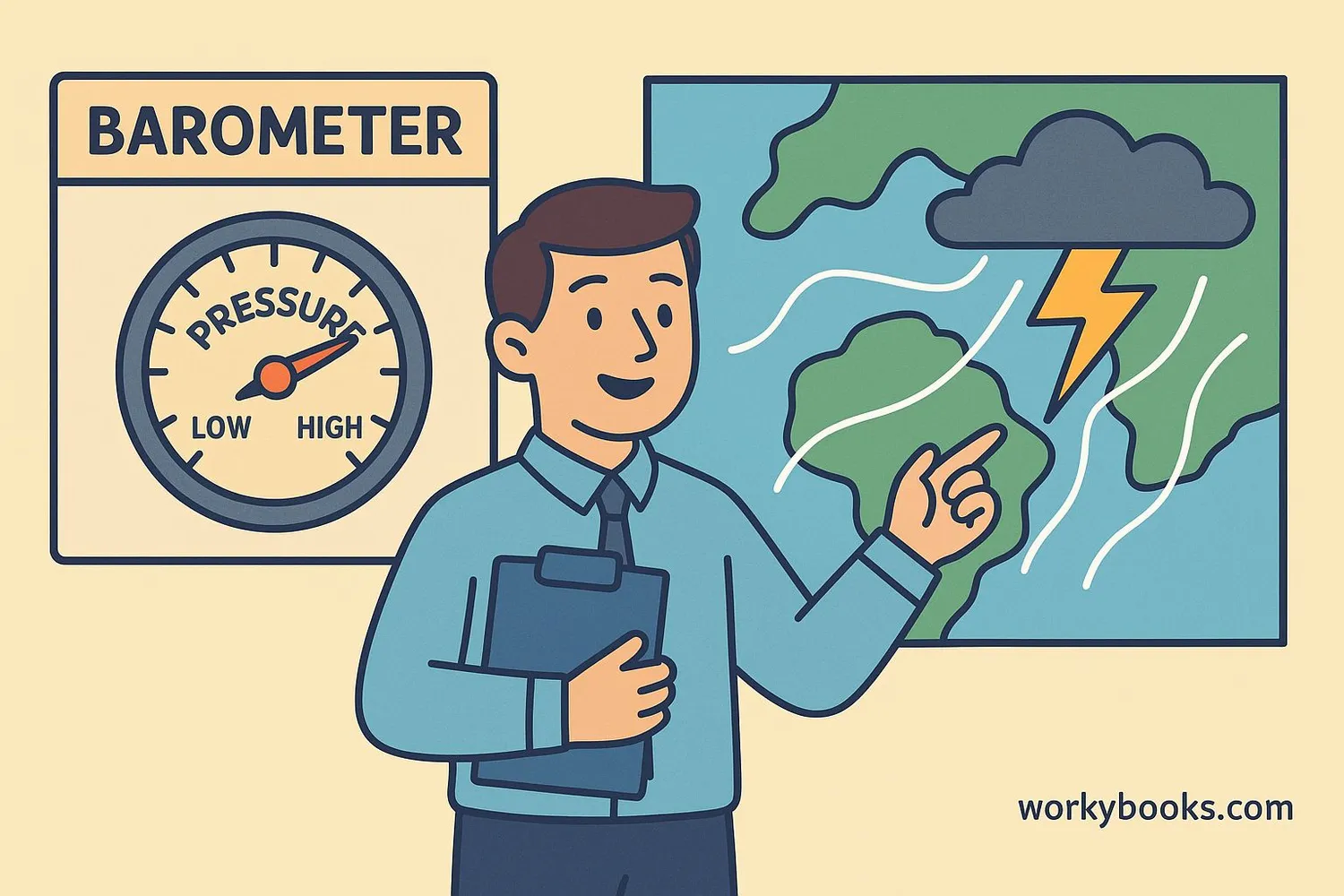The Science of Barometers - Definition, Examples, Quiz, FAQ, Trivia
Discover how we measure air pressure to predict weather changes
What is a Barometer?

A barometer is a scientific instrument that measures atmospheric pressure - the weight of the air above us. Think of it as a special scale for weighing the air! Atmospheric pressure changes with weather patterns, so barometers help us predict if it will be sunny, rainy, or stormy.
The word "barometer" comes from Greek words meaning "measure of weight." When atmospheric pressure is high, it usually means fair weather is coming. When pressure drops quickly, stormy weather might be on the way!
Did You Know?
At sea level, the weight of the atmosphere is about 14.7 pounds per square inch - that's like having a small car pressing down on your desk!
How Barometers Work

Barometers work by balancing the weight of the atmosphere against a column of liquid (usually mercury) or a mechanical spring. Here's the science behind it:
Air Has Weight
The atmosphere pushes down with force on everything
Liquid Responds
In mercury barometers, air pressure pushes mercury up a tube
Pressure Changes
Higher pressure lifts mercury higher in the tube
Measure Height
The mercury height shows atmospheric pressure
Predict Weather
Rising pressure = fair weather, falling = stormy
Atmospheric pressure is measured in units called millibars or inches of mercury. Normal pressure at sea level is about 1013 millibars or 29.92 inches of mercury. When pressure drops below this, storms may be approaching!
Altitude Matters!
Atmospheric pressure decreases as you go higher in elevation. That's why barometers must be adjusted for altitude to be accurate.
Types of Barometers

Scientists have developed different types of barometers over the centuries. Each has its own advantages for measuring atmospheric pressure:
Mercury Barometer
The original design invented by Evangelista Torricelli in 1643. Uses a glass tube filled with mercury. Very accurate but fragile and contains toxic mercury.
Aneroid Barometer
Uses a small metal box (cell) that expands or contracts with pressure changes. Doesn't use liquid, making it portable and safer. Common in homes.
Digital Barometer
Modern electronic sensors measure pressure changes. Often part of weather stations or smartphones. Most precise and can record data over time.
Why Barometers Are Important

Barometers are essential tools in meteorology and daily life. Here's why they matter:
Weather Prediction
Rapid pressure drops often signal approaching storms
Aviation Safety
Pilots use barometers for altitude readings and weather
Altitude Measurement
Barometers help determine elevation in hiking and mapping
Without barometers, we wouldn't be able to:
• Accurately predict weather changes
• Warn communities about approaching storms
• Safely navigate aircraft through changing conditions
• Measure altitude for hiking and surveying
• Conduct scientific research on climate patterns
Meteorologists consider barometric pressure one of the most important measurements for weather forecasting!
Barometer Quiz
Test your knowledge about barometers and atmospheric pressure with this quiz!
Frequently Asked Questions
Here are answers to common questions about barometers:
Barometer Trivia
Discover fascinating facts about barometers and atmospheric pressure:
Ancient Prediction
Before barometers, people predicted weather by observing animal behavior. Swallows flying low or ants building higher hills meant rain was coming - caused by falling pressure!
Heavy Air
The total weight of Earth's atmosphere is about 5.5 quadrillion tons! That's equivalent to 5,500,000,000,000,000 (5.5 × 10¹⁵) tons pressing down on our planet.
Pressure Extremes
The highest barometric pressure ever recorded was 1083.8 mb in Mongolia (2001). The lowest was 870 mb in a Pacific typhoon (1979) - that's 87% of normal pressure!
Weather Sensitivity
Some people can "feel" pressure changes in their joints before storms arrive. This sensitivity is why some claim they can predict weather with their bodies!





